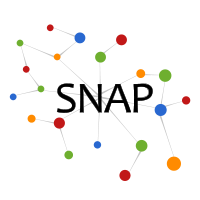Disparate Associations of Food Environment
In a country-wide study of 1,164,926 U.S. participants, we find that associations between food environment and diet health vary significantly across zip codes with predominantly Black, Hispanic or White populations.
Tracking Diet Health at Scale
An unhealthy diet is a key risk factor for chronic diseases including obesity, diabetes, and heart disease. Limited access to healthy food options may contribute to unhealthy diets. However, studying diets is challenging, typically restricted to small sample sizes, single locations, and non-uniform design across studies, and has led to mixed results on the impact of the food environment. Here we leverage smartphones to track diet health, including the consumption of fresh fruits and vegetables, fast food and soda, as well as weight status in a country-wide observational study of 1,164,926 U.S. participants (MyFitnessPal app users) and 2.3 billion food entries to study the independent contributions of fast food and grocery store access, income and education to diet health outcomes. This study constitutes the largest nationwide study examining the impact of the food environment on diet to date.
Results
We find that higher access to grocery stores, lower access to fast food, higher income and college education are independently associated with higher consumption of fresh fruits and vegetables, lower consumption of fast food and soda, and lower likelihood of being affected by overweight/obesity. However, these associations vary significantly across zip codes with predominantly Black, Hispanic or White populations. For instance, high grocery store access has a significantly larger association with higher fruit and vegetable consumption in zip codes with predominantly Hispanic populations (7.4% difference) and Black populations (10.2% difference) in contrast to zip codes with predominantly White populations (1.7% difference). Policy targeted at improving food access, income and education may increase healthy eating, but interventions may need to be targeted to specific subpopulations and locations for optimal effectiveness.
Code
Our code can be downloaded here. The archive contains a README file, Jupyter notebooks for reproducing all experiments and figures, and two datasets of all outcomes at the zip code and county-level (we cannot release individual-level data due to privacy concerns).
Contributors
The following people contributed to the Diet Disparities project:
Tim AlthoffHamed Nilforoshan
Jenna Hua
Jure Leskovec



